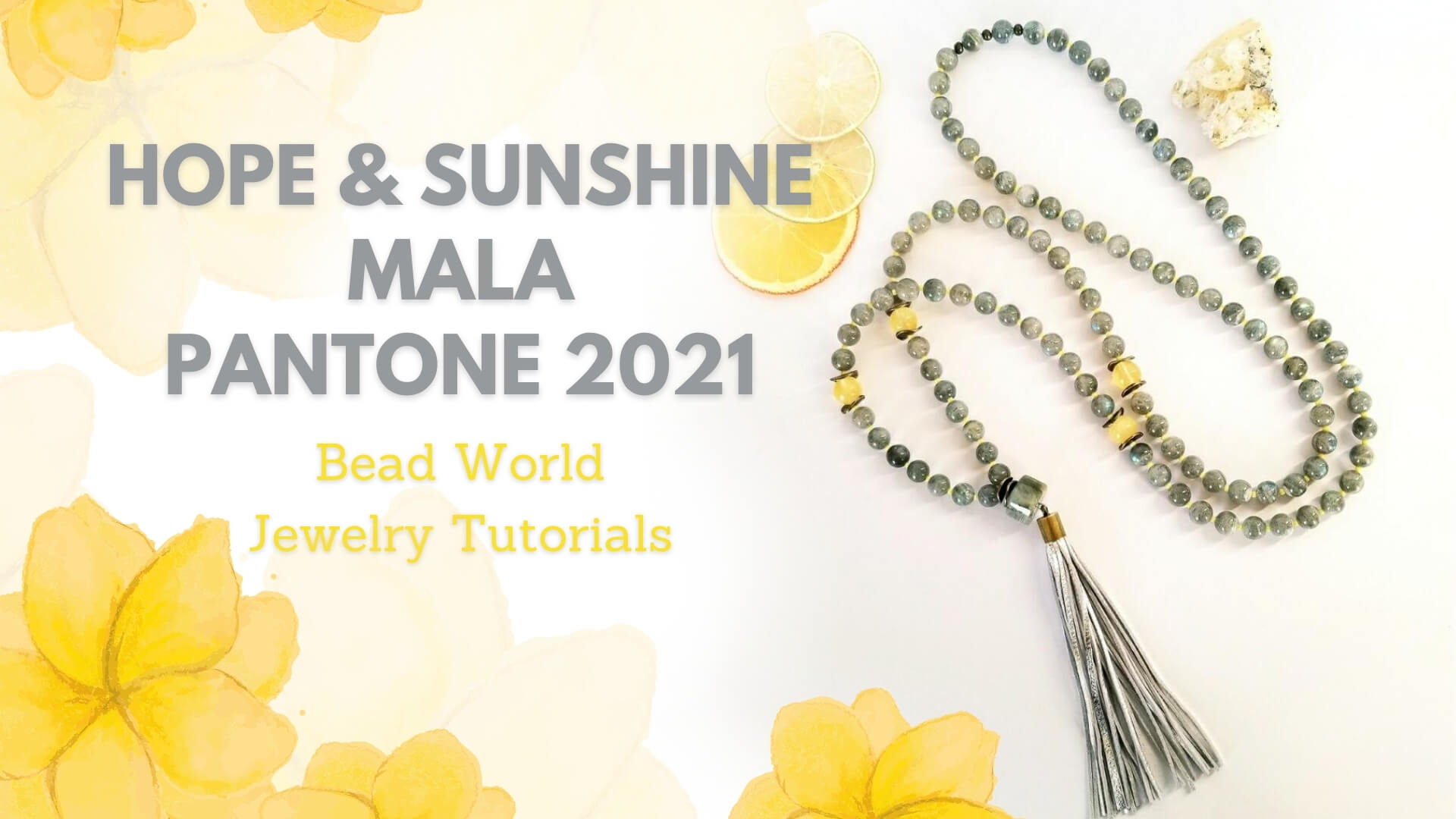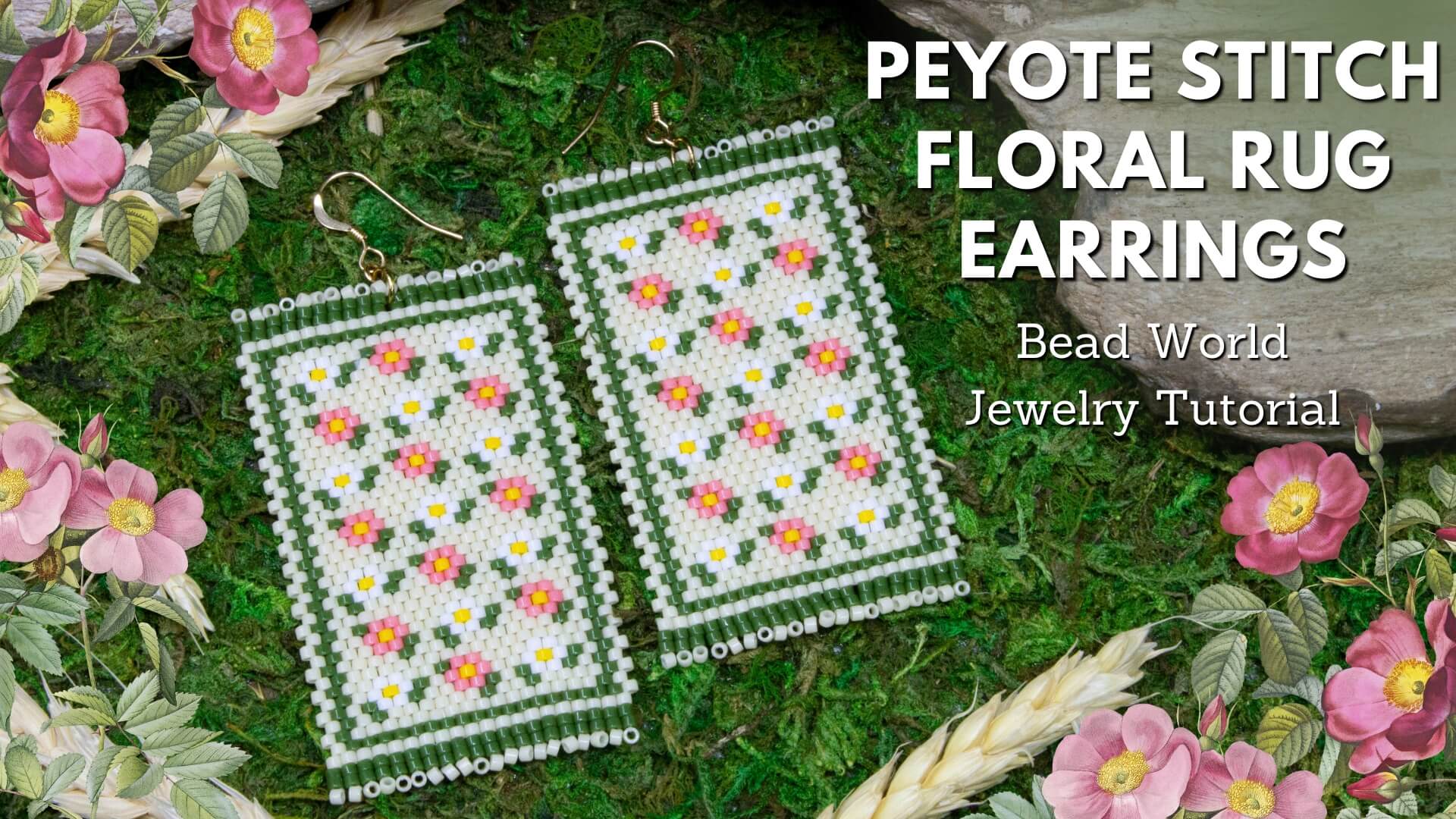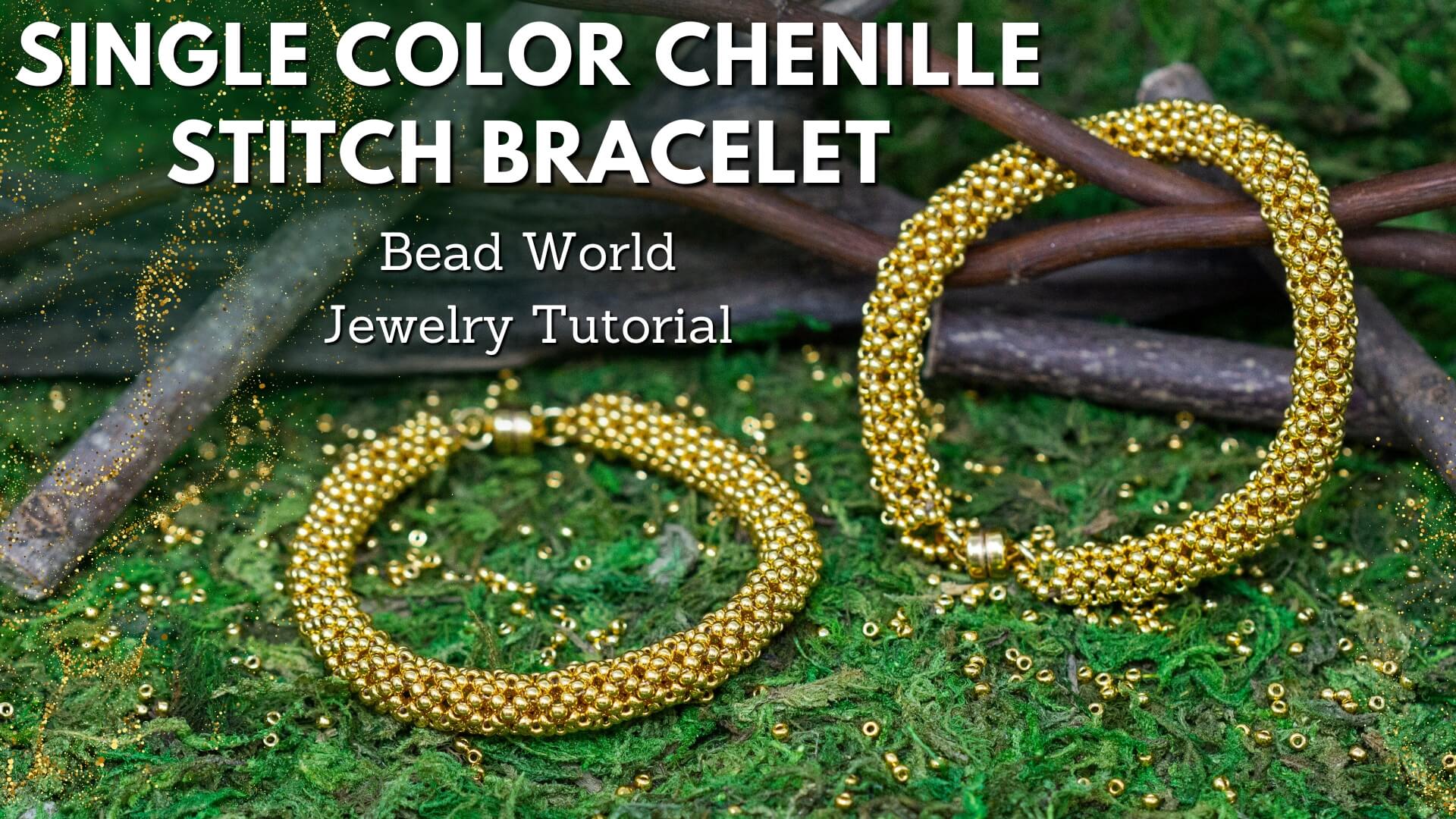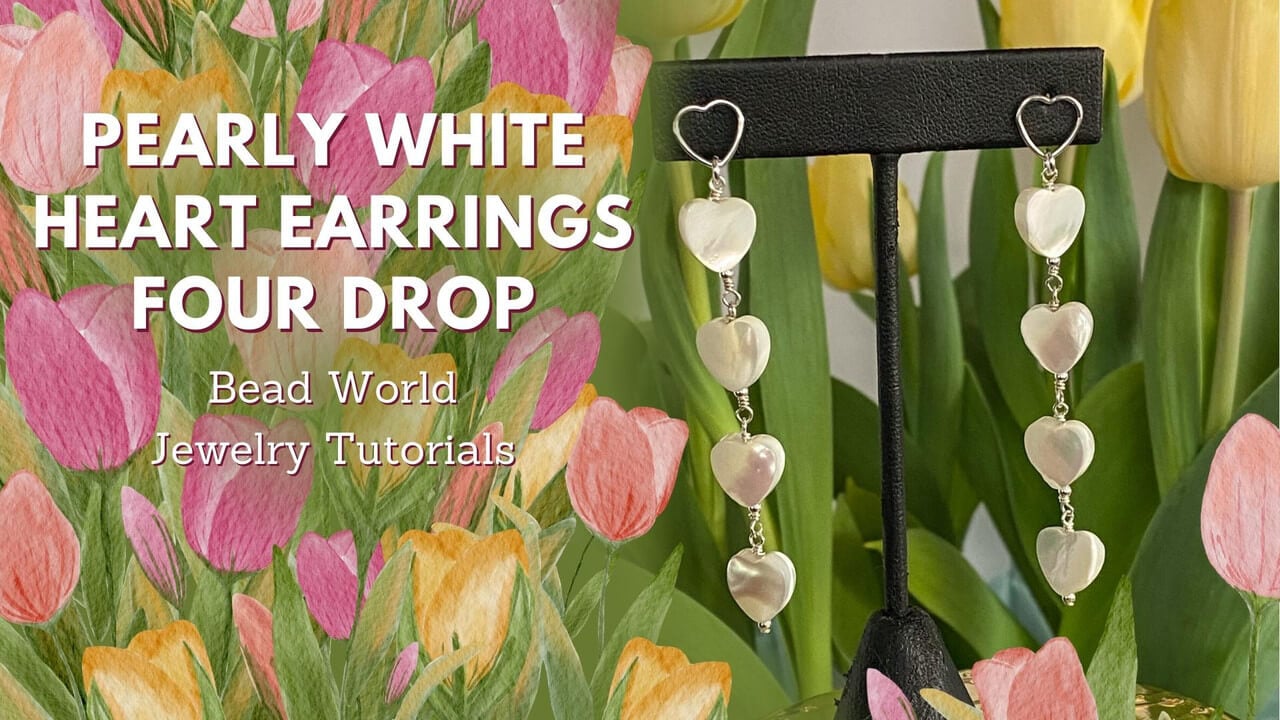Tutorials
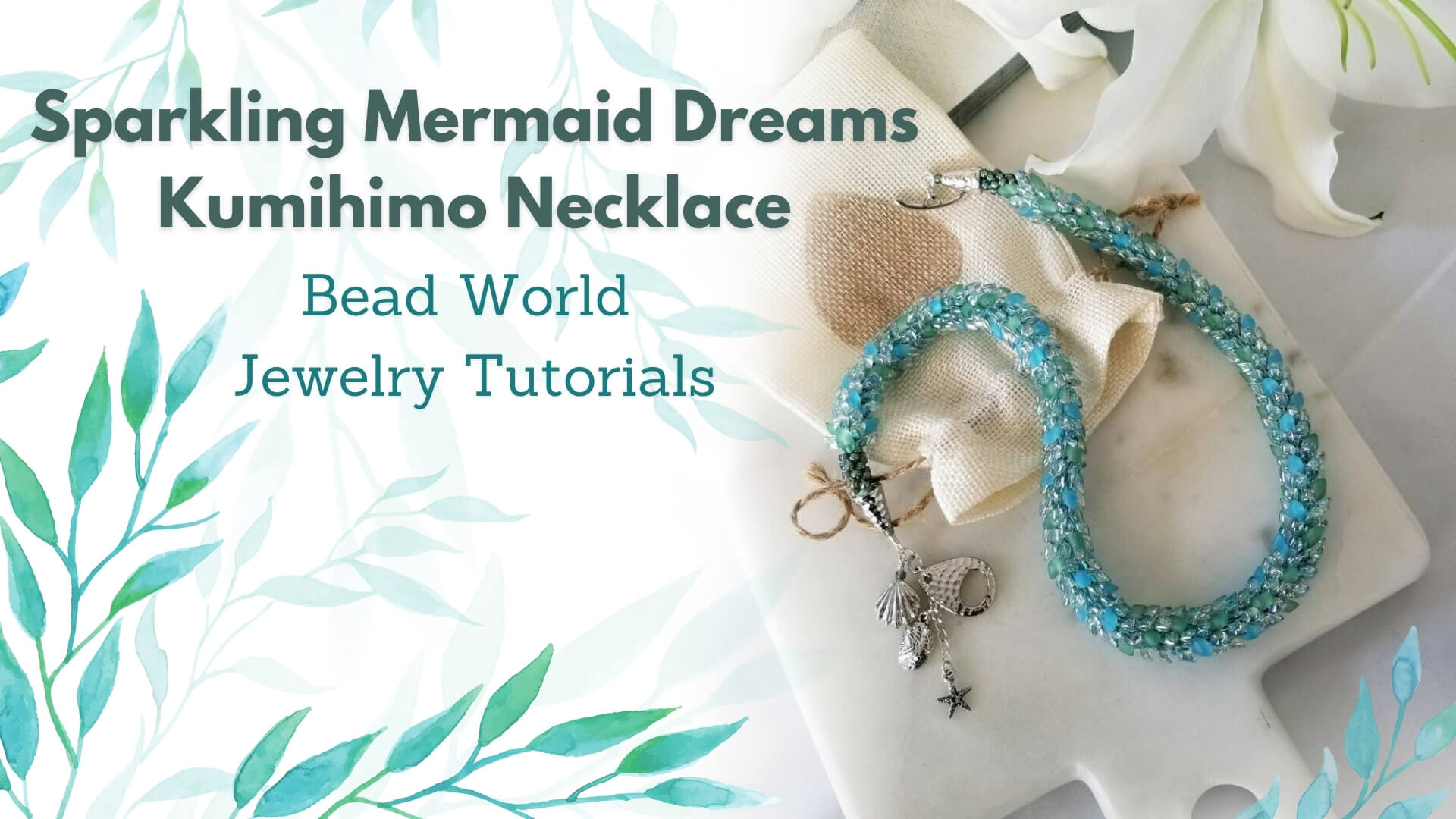
“Sparkling Mermaid Dreams” Kumihimo Necklace
“Sparkling Mermaid Dreams” Kumihimo Necklace
***Skills needed: beaded kumihimo & wire wrap
These directional magatamas remind me so much of fish scales sparkling in the sun, which gets me to dreaming of beautiful mermaids & dolphins playing in the waves…. summertime in Arizona will do that to you! I am already dreaming of the beach! You could also pick a theme & color palette and use this pattern to make your own work of art.
Stringing directional magatamas does take time and patience and unfortunately it does show if the beads are not ALL pointing in the same direction. Stringing will probably take 2-2 ½ Hours, it is worth the effort though and it will create a stunning necklace!
*** The bead stringing can be speeded up if you use a collapsible eye needle (Bead World carries a Griffin brand needle), or a split eye needle.
Materials Needed:
- (24’) Macramé Cord, S-Lon Medium, Color – Turquoise (or whatever color works with your bead choice)
- 5 Tubes of 4 x 7mm Magatamas – Light Sea Foam Lined Crystal AB
- 1 Tube of 4 x 7mm Magatamas – Transparent Light Blue AB Matte
- 1 Tube of 4 x7mm Magatamas – Sea Glass Green Matte
- 1 Tube Size 8 Miyuki Seed Beads # 361 Olivine/Beige Lined AB (48 used)
- TierraCast Rhodium Plated Hammertone Cones (2)
- Tierra Cast Ellipse Toggle
- TierraCast Large Shell (1)
- TierraCast Abalone (1)
- TierraCast Tiny Sea Star (1)
- 2” Long 22g Headpins Sterling Silver
- 6mm 18g Closed Round Silver Plated Jump Rings
- 5mm 18g Open Stainless Steel Jump Rings (for attaching clasp to closed jump ring and for dangles)
Finished Length 19” (this can be made to whatever length that you choose)
Tools Required
Round (or Mini) Kumihimo Braiding Disk
8 x Bobbins (for holding macramé cord)
Needle Nose Pliers (also known as chain nose)
Optional
Triangular Scoop - (useful for scooping/moving piles of beads)
Instructions on Construction:
*** When making a kumihimo braid try to keep your weight centered in the hole & make sure that it is hanging because if it is resting on any surface it cannot act as a weight and your tension will start to look strange.
*** If you have to put your braid down & walk away remember to leave it with three strands in the bottom position, that way you will always know to start when you resume working on it.
*** Keep a tall tumbler/cylinder handy, if you leave your work you can place the disk on top and then everything stays neat. *** Keep an eye on your work as you go that way you can correct any mistakes sooner than later. If you look at the braid and something looks strange (tension or missing bead maybe) you can reverse the flow of work and that will undo your braid, you can go back to the mistake and correct it. This means you will go from top left to bottom left, bottom right to top right and then turn ¼ turn clockwise and repeat. Give it a try, it works!
- Take your bead matte and lay out your seed beads and magatamas into 4 separate piles, you do not need to have them all out, but it is good to have easy access when stringing.
1.Cut the 24’ of macramé cord into eight 36” lengths. Tie all eight macramé cord tails together using an overhand knot (like tying a balloon).
2.On first cord, string 3 size 8 seed beads, 63 sea foam lined crystal AB magatamas (all pointing in the same direction with points going towards the seed beads – if in doubt hold cord up and make sure the beads all stack on top of each other), 3 size 8 seed beads and then tie a double knot at the end of the strand to act as a stopper. Wind this beaded section onto your # 2 bobbin. Repeat this with five of the other seven cords (wind them onto bobbin #’s 3,4,6,7 & 8).
*** I find it useful to number the bobbins I use a sharpie and number them 1-8
- 3.On cords # 1 & 5: string 3 size 8 seed beads, 63 transparent light blue and sea glass green matte (a random mix of the two (see below) - all pointing in the same direction with points going towards the seed beads – if in doubt hold cord up and make sure the beads all stack on top of each other), 3 size 8 seed beads, tie the double knot at the end of strand to act as a stopper and wind these onto bobbins # 1 & 5.
*** Sometimes it is hard to pick randomly so this may help a lot. Take 32 blue magatamas and 31 green magatamas then divide these into three equal piles of 21 (with approx. the same color mix in each). Spread out these three piles on your bead mat and draw from one pile at a time, in a random manner and string onto cord (being careful that they are all pointing in the same direction as the other cords). This will mean that they are random, but that you end up with balanced number along the braid.
4.Place the eight-strand knot into the hole in the center of the kumihimo disk and position the cords around the disk using the four dots as guides (one cord to each side of the dots). Slide # 1 bobbin cord into notch between 32 & 1 and work your way around clockwise from there ending with # 8 bobbin cord in the notch between 31 & 32, pull the cords tight and clip the weight to the knot hanging below the kumihimo disk.
5.Begin kumihimo by moving the cord at the top right (between 32 & 1) to the bottom right (between 14 & 15). Move the cord at bottom left (between 16 & 17) to the top left (between 30 & 31). Pull cords firmly into notches as this will keep a good tension.
6.Rotate the entire kumihimo disk counterclockwise ¼ turn. Move the cord at the top right (between 8 & 9) to the bottom right (between 22 & 23), move the cord at the bottom left (between 24 & 25) to the top left (between 6 & 7). Repeat until you have about 1/4 – 1/2” of a kumihimo braid.
7.Now the fun begins & it’s time to add beads! You will be repeating the previous instructions but this time when you move the cord from the notch, slide one bead from that cord towards the center braid. You will slide the bead underneath the first cord that you cross over (this locks the bead into place) the cord will go to the same position that you have been doing. *** It does help if your tension is tight, as it is easier to slide the bead under a taught strand). Remember to move cord from top right to bottom right, then bottom left to top left, rotate disk ¼ turn counterclockwise and repeat. The magatamas lock in the same way as the seed beads, just be sure that the long pointy end is facing out.
8.Repeat step 7 adding a bead each time you move the cord until all beads are used. Repeat steps 5 and 6 creating a braid that is just cord (the same as beginning). Unclip the weight and gently remove all eight cords from the kumihimo disk. Tie the ends of the cord in an overhand knot, forming the knot over the initial braided section so that it sits right next to the seed beads. This bulks up the end so that it will fit nicely into the hammered cone end cap.
9.Use a thread zapper to cut off excess cord but leaving the knot plus a little extra, which should ensure a good fit (don’t trim too much to start with you as you can always remove more, but you can’t put it back!) The thread zapper is a great tool because melting the ends secures the braid. Slide the end cap onto each end to determine how much more of the braid needs to be cut off for the end cap to reach the beads (you do not want to see any of the raw cord, so the end cap should meet flush with the seed beads). Trim off any extra length with the thread zapper. Repeat with other end of kumihimo braid.
10.Take one of the 2” headpins thread on one size 8 seed bead, thread through hole in the cone end cap (from inside out) add one more size 8 seed bead and form wire wrapped loop (using your needle nose and round nose pliers), thread onto the closed jump ring and then complete wire wrap, this secures end cap to the closed jump ring. Repeat with the second hammered cone end cap.
11.Place a small amount of E6000 glue on one kumihimo braid end (a toothpick is a handy tool to help with this). I also put a good amount of glue into the end cap to make sure that the braid is well attached inside the end cap. Slide the end cap onto the braid end. Clean up any extra glue as necessary (if you miss some glue it is possible to scrape off the end cap when dry). Repeat on the second end. E6000 takes a while to fully cure so be cautious while finishing the rest of the necklace, or if you can be really patient allow to cure for several hours before completing the next stage.
12.On toggle end attach closed jump ring to toggle bar using 1 open jump ring. When using jump rings, open with either two flat nosed pliers, or one flat and one needle nose plier, grip one side of the break point firmly and open by twisting the other side away from you. The key is not to un-round your jump ring.
13.On other end of necklace attach the hammered clasp to the closed jump ring using 2 open jump rings. There are now three jump rings in a row, attach approx. 1 ½” of delicate chain to the middle ring and then add the tiny sea star to the end of the chain using an open jump ring. Approx. halfway down the chain add the abalone charm using a jump ring. The final addition is the wire wrapped large shell dangle, this is made by taking a headpin threading on the shell and 1 size 8 seed bead on top, then creating a wire wrap loop that attaches to the closed jump ring.
14.This lovely kumihimo necklace can be worn with the clasp in the back, front or at the side, it will be a fun addition to your jewelry collection that is sure to grab attention!
15.Try on your new necklace & admire your handiwork!
Enjoy!
Jewelry designed by Steph Stirniman at https://magpiecollectives.etsy.com/




